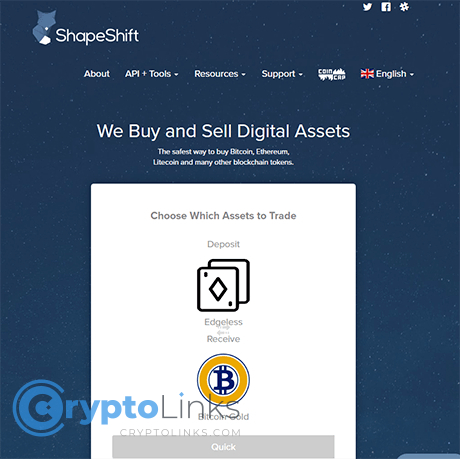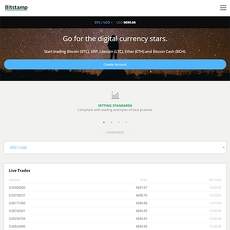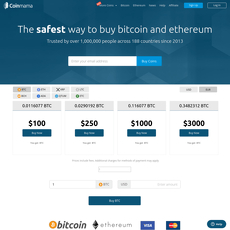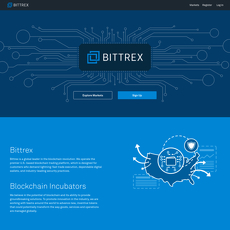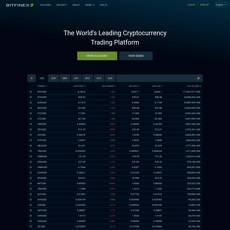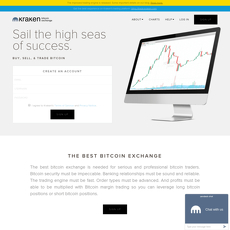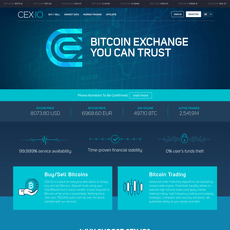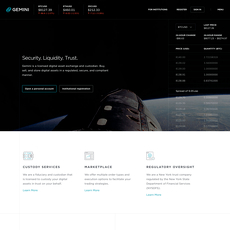ShapeShift Review
ShapeShift
shapeshift.io
ShapeShift Review Guide: Everything You Need To Know (With FAQ)
Ever found yourself annoyed by exchanges that ask for selfies, utility bills, and birth certificates—before you can even swap $50 worth of crypto? You’re definitely not alone. If you’ve ever wondered, “Is there a faster, more private way to trade my bitcoin for ethereum or that shiny new altcoin?”—then you’ll want to pay close attention to what’s coming up next.
Why Even Use ShapeShift?
Getting your hands on crypto, or swapping between coins, can sometimes feel like running a marathon—full of obstacles. If these sound familiar, you know what I mean:
- Platforms that demand KYC (Know Your Customer) verification for even the smallest trades
- Slow withdrawals and endless pending screens
- Custodial exchanges that hold your funds instead of letting you control your wallet
- Concerns about hacks, lost assets, or frozen accounts
For anyone who values speed and privacy, these pain points are a deal-breaker. That’s exactly why so many folks started searching for something better—including me.
Is There A Better Way?
Here’s where new platforms started to flip the script. With a solution like ShapeShift, you’re back in the driver’s seat. Want to trade bitcoin for ethereum or swap into a trending token—without some exchange adding you to their database? You can do it, fast, and without the extra stress.
Consider this: It used to be the norm to complete identity checks, even for just small swaps. Studies show that over 80% of centralized crypto platforms now require strict KYC. Compare that to ShapeShift, which famously lets you swap crypto anonymously—no sign-up required. If you’re the type who doesn’t want to hand over all their personal info, this can be a total game changer.
The Challenges With Other Exchanges
It’s not just the paperwork. Most big-name exchanges have their hands deep in your pockets, too:
- They set withdrawal minimums, or pile on extra fees when you just want to move your coins.
- If there’s an outage or hack (remember Mt. Gox, or the dozens of high-profile breaches since?), you could lose access to your funds entirely—and there’s no undo button for crypto.
- And let’s be real, who hasn’t worried about whether an exchange is being totally honest about their reserves or security practices?
ShapeShift came onto the scene promising to change all of that. No accounts, no custodial risk, just straightforward swaps. And it still works that way, even as the industry gets more complex by the year.
Why People Are Looking For Non-Custodial Options
At its core, crypto is all about financial freedom. That’s not just a catchphrase—it’s about being able to hold, move, or trade your assets when you want, not when some platform allows it. Non-custodial options like ShapeShift let you:
- Stay in control of your private keys (meaning, only you own your funds)
- Trade directly from your wallet—no deposits, no lock-ins
- Preserve your privacy without mountains of paperwork
"Not your keys, not your coins." ShapeShift’s entire platform is proof that this saying still matters in 2024.
Ready to see how ShapeShift actually works and what sets it apart from every other way to exchange crypto? Stick around—next up, I’ll walk you through what exactly ShapeShift is and what makes it such a unique player in the crypto world. Got a crypto wallet? You’re halfway there—let’s check out the magic in the next section.
What Is ShapeShift?
ShapeShift is all about keeping things simple yet secure in the crypto world. Imagine swapping your favorite coins—BTC, ETH, LTC, or that shiny new token everyone’s talking about—without ever having to stress over registrations, endless forms, or handing over your deepest secrets. That’s ShapeShift in a nutshell: a non-custodial platform designed to let you swap crypto on your terms, with no strings attached.
How Does ShapeShift Work?
Here’s what makes ShapeShift so refreshing: you just connect your wallet, pick the coins you want to swap, and confirm the transaction. Done. ShapeShift never touches your funds. Everything happens between your wallet and the blockchain. Think of it as a high-tech “middleman” with zero temptation to take your stuff. It’s exactly the kind of power users crave, and in a world where trust is golden, that counts for a lot.
- No sign-ups – No time wasted filling in forms
- No accounts – Your coins are always in your control
- No custodial risk – You’re not handing over your coins ever
The first time I tried ShapeShift, I was done before my coffee cooled. There’s something deeply freeing about seeing that confirmation screen pop up while knowing only you ever had access to your funds.
“Privacy means people know what they're doing. It's a matter of liberty.” – Eric Hughes, The Crypto Anarchist Manifesto
ShapeShift Then vs. Now
Some folks remember ShapeShift’s early days as a simple swap website (and honestly, it was magic at the time). But times have changed—today, ShapeShift has pushed the envelope, offering a complete platform experience. You can swap, track, and manage your crypto with their open-source FOX Wallet, or plug in popular wallets you already use like MetaMask or WalletConnect. Oh, and it works on both desktop and mobile, so you’re covered wherever you go.
Open-source veterans know: transparent code means you can actually see what’s happening under the hood. That’s a big deal—especially with all the stories about sneaky backdoors and shady platforms in the wild west of crypto.
How Is ShapeShift Different from Centralized Exchanges?
Let’s cut to what matters most: custody. Centralized sites (think Coinbase or Binance) hold your funds—and your private info—until you ask for it back. That puts a lot of trust (and risk) in their hands. ShapeShift flips the script. At no point does ShapeShift control your money or keep your keys. You’re the boss from start to finish.
- Security: No stored funds for hackers to target.
- Freedom: You manage your keys, so you decide when and what to trade.
- No forced KYC: Just connect and swap—no personal data locked away somewhere else.
It’s this almost old-school, crypto-cypherpunk vibe that sets ShapeShift apart. When news breaks about another major exchange losing user funds, ShapeShift users just shrug. Their coins were never at risk in the first place.
And if you’re wondering, “Okay, but what coins can I actually swap with ShapeShift now?”—the next section breaks down the full list of supported assets and pairs. Stay with me if you want the inside scoop on all things tradable…
What Coins and Pairs Does ShapeShift Support?
Let’s be real: the biggest reason people check out any exchange is to see which coins are up for grabs. ShapeShift doesn't disappoint. Whether you’re a bitcoin maximalist, an altcoin explorer, or just hunting for that perfect pair, ShapeShift covers a surprising amount of ground.
Does ShapeShift Support BTC-To-USD?
If you’re hoping to turn your bitcoin directly into dollars, ShapeShift might throw you for a loop. There’s no fiat on-ramp or off-ramp here. You can’t swap BTC straight into USD, GBP, or any government-backed currency. But—here’s the trick I see a lot of savvy users taking—ShapeShift lets you exchange your bitcoin for leading stablecoins, like USDT (Tether) or USDC, in seconds. And once you’ve got stablecoins, you open up a whole new world for cashing out on another platform or holding steady without being chained to bitcoin’s price swings.
Popular Trading Pairs
The number of trading options on ShapeShift is seriously impressive. You can move between:
- BTC ↔ ETH — The classic swap. No need to touch centralized exchanges for this power trade.
- BTC ↔ LTC — Lots of people don’t realize you can move funds to litecoin fast for lower fees, especially when the Bitcoin network is busy.
- ETH ↔ ERC-20 tokens — Think UNI, LINK, AAVE, and all the big names on Ethereum. You can even mix and match between tons of DeFi tokens.
- BTC/ETH ↔ Stablecoins — Straight stability when you need to step out of the market rollercoaster.
The roster is always growing. ShapeShift’s open approach means you’ll spot new coins popping up pretty often. Not long ago, ShapeShift was one of the first places you could quickly hop between bitcoin and DeFi tokens—before that was the norm on other platforms.
Can You Exchange Altcoins on ShapeShift?
Absolutely. If you’re like me and you’ve ever chased new trends—maybe you wanted to pick up some COMP tokens during the DeFi craze, or you’re interested in smaller assets with real momentum—you can usually find what you want on ShapeShift. It’s been an altcoin swap playground since back in the day. A study from the Cointelegraph research team showed that ShapeShift regularly lands as a top choice for quick altcoin trading due to its open-listing strategy.
“If you don’t believe it or don’t get it, I don’t have the time to try to convince you, sorry.” — Satoshi Nakamoto
I find a weird sense of freedom every time I swap random tokens just to test out a new project or hedge without any mini heart-attacks over KYC or withdrawal issues. There’s no waiting for an account review, no digging up your old utility bills for verification. If a coin’s live, odds are you can swap it.
And here’s something cool: ShapeShift isn’t shy about embracing new assets. If you’ve got a favorite token, keep tabs—there’s a good chance support will appear a lot sooner than you’d expect.
Have a coin in mind that you want to swap or curious if your rare altcoin is supported? Next, I’ll show exactly how the whole process works, step by step—including wallets, swap times, and how not to mess up your first trade. Ready to actually try it? Stick around for the walkthrough in the next section…
What’s the Process: How To Use ShapeShift (Step-By-Step)
Let’s be real—if swapping crypto feels like a hassle, that defeats the whole point. ShapeShift figured this out a long time ago. Here’s the down-to-earth, no-nonsense way of getting your coins swapped without hoops or headaches. If you’re brand new or you just want a refresher, you’re about to see how quick this non-custodial stuff can really be.
Setting Up Your Wallet
First things first, you need a crypto wallet. Most people already have one, but if not, you can easily set up the official FOX Wallet. It’s open-source, beginner-friendly, and the onboarding takes less than five minutes. Connect your hardware wallet (like Trezor or Ledger), browser extension (MetaMask), or mobile wallet. No excuses—pretty much every serious wallet works here.
- Already have MetaMask? Just connect and you’re in.
- Prefer a hardware wallet? Plug it in, choose, connect, done.
- No wallet? Download FOX Wallet, generate your seed phrase, and back it up somewhere safe. Please, don’t leave it in your downloads folder. Not even for a minute.
Making A Swap
Now the fun part. It’s as simple as choosing what you’re sending, picking what you want to receive, and letting ShapeShift find the best rates across multiple DEXs. Imagine swapping ETH for USDT or exploring some new ERC-20 token in just a few taps. No complex charts, no spread guessing—just pure swapping.
- Select the crypto you want to swap from.
- Pick what you want to receive.
- Enter how much, double-check the wallet addresses (especially if you’re copying and pasting, because typos hurt), and hit swap.
- Approve the transaction in your wallet, pay attention to gas (network fees do matter right now), and you’re set. I’m talking minutes, not hours.
“Simplicity is the ultimate sophistication.” – Leonardo da Vinci. That honestly sums up the ShapeShift way.
Speed, Minimums, and Limits
Most swaps are impressively fast. In fact, for many assets, you’ll have your new coins in your wallet before your coffee finishes brewing. On average, I see swaps land within 2-10 minutes depending on the token and network traffic. Just keep in mind:
- Minimum swap amounts pop up automatically based on the coin and network fees—no guesswork or tiny test swaps needed. (BTC is usually higher due to its fee structure—stablecoins are usually much lower.)
- There might be occasional limits based on liquidity, but I’ve yet to find myself unable to swap what I need.
A recent user stats roundup showed typical swaps stay under that 10-minute mark, with high-volume tokens moving even faster. The thrill of seeing funds arrive so quickly never really gets old.
Do You Need To Register?
This is where ShapeShift stands out. You do not need to hand over your name, email, or ID to swap crypto-to-crypto. That privacy is rare these days, and it’s exactly why so many have stuck with ShapeShift for years—no spam, no data breaches, no “just one more verification step.” Just swap and move on.
Other platforms might make you jump through endless KYC hoops “for your security.” Here, your wallet is your identity—and no one can freeze your account or lock your funds. When people realize how liberating this feels, there’s usually no going back.
It almost sounds too simple, right? But this is what crypto was always meant to be: fast, borderless, and yours.
Alright, if you’re anything like me, the next question is always, “but what’s the catch… how much will this cost me?” Stay with me—next, we're breaking down fees, tricky spreads, and the real cost of swapping on ShapeShift. Got your calculator ready?
Fees, Pricing & Hidden Costs
Let’s be real—fees can quietly nibble away at your crypto stash. Every savvy trader knows the pain of thinking they got a sweet deal, only to see a chunk vanish through mystery charges or opaque spreads. With ShapeShift, things are a bit different, but it’s crucial to know exactly where your money goes.
Does ShapeShift Charge Fees?
The first thing people always ask me: “So what’s ShapeShift’s cut?” Good news—there’s no commission fee slapped onto your swaps. The platform makes its money from the spread rather than adding an extra fee on top. The spread is simply the difference between the buy and sell prices you see. It isn’t hidden, but it’s not always obvious if you’re used to exchanges that list a flat rate.
- No extra trading commission: What you see is what you get—no added platform fee appears at checkout.
- How does this affect you? Let’s say you’re swapping bitcoin for ethereum. If the BTC/ETH rate is 1:15 elsewhere, you might see 1:14.8 here. That 0.2 difference is the spread, and that’s how ShapeShift keeps its lights on.
If you’ve ever felt burned by surprise “processing” or “service” fees after starting a swap, you’ll welcome the simplicity here. No hidden boxes to tick, no random deductions at the end.
Network Fees
This part is standard across all crypto platforms: network fees. You can’t blame ShapeShift for these—the blockchain itself needs to pay the miners or validators. Sometimes I get messages from new users worried that ShapeShift is “charging extra” when, in reality, network fees can spike wildly depending on traffic.
- Example: If you’re swapping ETH during a busy time, the Ethereum network fee could jump from $1 to $30+ in minutes. ShapeShift always shows this number up front so there are no ugly surprises.
- Who gets this? Not ShapeShift—the fee is paid to the blockchain, not the platform.
How Does It Compare To Other Platforms?
I’ve put the numbers side by side: ShapeShift usually keeps its spreads and overall cost on par with most DEXs and even below some of the bigger centralized options—especially when those places tack on withdrawal or withdrawal fees (hello, Binance and Coinbase!).
- Transparency: No account fees, monthly charges, or withdrawal headaches.
- Competitive spreads: If you’re swapping less-popular coins, you might see a slightly wider spread, but that’s true everywhere. You’re paying a premium for both privacy and self-custody.
“It’s not the man who has too little, but the man who craves more, that is poor.” When you’re trading crypto, sometimes it’s worth trading a tiny bit of spread for a platform that doesn’t crave your ID, control your funds, or leave you hanging when you want out.
I’ve even seen reports from avid traders on Reddit and Twitter who prefer paying a little more on ShapeShift just for the peace of mind and privacy you get. It’s about picking your battles—do you want the absolute lowest price, or do you want to sleep soundly at night, knowing your keys never left your hands?
If you’ve ever wondered, “Am I the only one who’s tired of getting nickel-and-dimed on crypto swaps?”—trust me, you’re not. But now comes the bigger question: If you stay in control the whole time, how safe is it really? Stick with me, because next, I’m digging into what really matters—security. Ever worry about losing your coins in a bad swap? I’ll give you the real answer just ahead…
Safety & Trust: Is ShapeShift Safe To Use?
Let’s face it—putting your crypto anywhere online comes with a pinch of fear. Stories about hacks, lost coins, and rug pulls pop up all the time in the news. So, the question hits hard: “Can I actually trust ShapeShift with my assets?”
Security of Non-Custodial Exchanges
Here’s the beauty: your coins stay with you. ShapeShift doesn’t act like a vault, holding your funds hostage. Instead, the only time your assets leave your wallet is when you confirm a swap. If you’ve used a platform where you had to deposit coins and then just hoped for the best, you know how freeing this is.
- You own your keys: Private keys are yours alone. Remember, in crypto, “not your keys, not your coins.”
- No bait-and-switch: Withdrawals waiting for approval? Not on ShapeShift. Your funds are never stuck.
If you’ve ever lost sleep because an exchange was “performing maintenance” during a dip, you’ll appreciate the difference.
No KYC Means More Privacy
One thing I hear all the time: folks hate getting bombarded with KYC requests. Why send your ID, utility bill, and sometimes even a selfie, just to exchange a bit of ETH for LTC? On ShapeShift, for crypto swaps, you skip all that. There’s no registration wall and no snooping around your private data.
“Privacy isn’t just about hiding—it's about having control over what you share and when.”
This freedom is a lifesaver for traders in places with strict regulations or for anyone who values online anonymity.
Transparency and Open Source
How do you really know a crypto tool isn’t hiding backdoors? ShapeShift’s FOX Wallet is open source. That means anyone—developers, skeptics, or just power users—can check the code. When a platform puts its cards on the table, trust goes up. Platforms that hide everything behind closed doors? Been there, avoided that.
- Open-source code lets you verify: No need to take anyone’s word for it, especially in crypto where trust can be a luxury.
- Community-driven improvements: Bugs or vulnerabilities can be spotted and patched fast.
It’s a relief knowing your tools are transparent. It’s why some users even scan GitHub for updates before jumping onboard new wallets or services—me included.
Of course, there’s no such thing as “risk-free” online. The safety is as strong as your own habits: back up your seed phrases, avoid sketchy browser extensions, watch for phishing. But you’re getting a setup where the biggest risk isn’t some faceless exchange losing your coins.
Ever wondered how ShapeShift stacks up with customer support or community perks when things get tricky? Stick with me—a lot of platforms drop the ball once you need real help, but let’s take a closer look at what ShapeShift really offers in that department up next.
ShapeShift: Support, Community, and Extras
You know that feeling when you hit a snag and can’t find a real person to talk to? Been there. Crypto can feel pretty wild and lonely at times, which is why I always look at how exchanges actually treat their users beyond just tech and fees.
Customer Support
ShapeShift gets this part right. They use a ticket support system, but it’s not like tossing your question into a black hole. There’s a searchable knowledge base full of real answers (not just copy-paste fluff), and I’ve personally seen them helping users in their Discord, Twitter, and Telegram chats. Sometimes, a tweet can get you faster feedback than email — and it actually feels like someone on the other end cares about your problem, which isn’t always the case with crypto platforms.
Here’s what stands out:
- Quick ticket responses – usually under 24 hours (even less during U.S. days).
- Real answers from humans – not just automated bots making you jump through hoops.
- Public help channels – ask, and you might just get help from the community or team itself.
“Good customer support is the backbone of any crypto project. It’s what separates the serious players from the rest.”
FOX Rewards and Community Programs
Let’s be honest, most exchanges don’t give you much to stick around. But ShapeShift’s FOX token actually has a purpose. If you hold FOX in your wallet, you get discounts on trading spreads. The more you hold (and the more loyal you are), the more you save. It’s a nice touch, and yes—I’ve seen the rewards add up over repeat swaps.
But what’s really next-level is the community stuff. There’s the ShapeShift DAO (decentralized autonomous organization), which means any FOX holder can vote on major changes to the project. If you ever wanted to have a say in how your favorite crypto service works, here’s your shot. There aren’t many crypto platforms where your voice actually matters, but ShapeShift puts real power (and responsibility) in the hands of its users.
If you’re looking for something to earn, or want to test your say in governance, you’ll find:
- DEX trading rewards (paid in FOX)
- Bounties for helping out or contributing (from writing to dev work)
- Community calls and open governance votes
Mobile App and Website
Nothing kills the crypto mood faster than clunky apps or spammy ads. The ShapeShift experience is simple, modern, and does exactly what you need — trade, manage your wallet, and keep up with prices, all without distraction. The app works on iOS and Android, with the same feel as the website. It’s snappy, clean, and nothing is hidden behind “premium” popups.
I know some of you worry about privacy leaks from ad trackers or random plugins, but ShapeShift’s interface is refreshingly barebones where it counts. It’s all action, no propaganda.
The community feels real, not forced. I’ve seen devs and users joking around together, and open debates about what should happen next. It’s rare. Crypto can sometimes feel like a lonely planet, but you won’t get that here.
If you’ve ever wondered how this all stacks up against the likes of big exchanges—especially when it comes to trust, privacy, and whether you’ll get stuck in customer service limbo—stick around for what’s next. The upcoming part shows how ShapeShift compares head-to-head with the top dogs, and where it might even outshine the big names. Ready to see which one truly puts you in control?
ShapeShift vs Other Exchanges: How Does It Compare?
When it comes to swapping crypto, it's easy to get lost in a sea of exchanges promising everything under the sun. But let’s pull back the curtain and see where ShapeShift fits against some of the big names out there—especially if you care about privacy, speed, and staying in control of your funds.
Centralized vs Non-Custodial: The Real Differences
Picture how you’d use Coinbase, Binance, or Kraken. You hand over your money (and your info), trust the exchange to hold your coins, and hope their security is rock solid. As recent events have highlighted, even giants can get hacked, freeze withdrawals, or simply go offline.
With ShapeShift, it’s another world. You connect your wallet, make your swap, and your crypto never sits in an exchange’s vault. No waiting for withdrawals or praying support gets back to you if they lock up your account. You’re your own bank—ShapeShift just helps make the swap happen securely and quickly. For folks who want to cut out the middleman, that’s a huge win.
BTC-To-USD? Pros and Cons
So, can ShapeShift help you turn Bitcoin into cold hard cash? If you’re looking for a straight-up BTC-to-USD conversion in one shot, there’s a limitation: ShapeShift focuses on crypto-to-crypto swaps. But here’s a common workaround—swap your BTC for stablecoins like USDT or USDC, then move them to a platform that does let you cash out to USD.
Why would you do this? Many users—especially privacy fans—prefer not to expose themselves to KYC and custodial risks unless it’s 100% necessary. ShapeShift lets you control when and where you reveal details. The extra step can feel like a hassle, but if keeping your data private matters, it’s absolutely worth it.
I know some want the best of both worlds: fast fiat cashouts and solid privacy. If your priority is crypto swaps, ShapeShift leads the pack. If it’s cashing out, you’ll want to check out our mega-guide on BTC-to-USD exchanges. There you’ll find top picks for exactly where to swap 0.01 BTC to USD (or larger amounts) with tips on what actually matters, like fees, speed, and compliance.
When Should You Use ShapeShift?
This is the part where a lot of people get tripped up. ShapeShift shines when:
- You want to swap coins instantly without KYC pain or long waits
- You care about privacy and don’t want your wallet flagged for linking to an exchange
- You’re watching prices across multiple DEXs and want a better deal, all in one place
- You’re looking to stay “off the grid” and don’t want your funds sitting on someone else’s platform
If you need to turn crypto into fiat and withdraw to your bank, you’ll have to use a traditional exchange or one of the top picks from our crypto-to-fiat exchange review. I highly recommend checking out our breakdown on how different models work—from centralized custodians to true P2P networks—if you’re making that step.
Other Resources To Check (Including Our Top 15 Exchange List!)
Picking a platform to swap or cash out isn’t a one-size-fits-all decision. Beginners and seasoned traders both need to weigh things like security, KYC, liquidity, and even the quality of customer support. That’s why I put together these deep-dive resources:
- The Complete BTC-to-USD Exchange List — updated with pros, cons, and real user experiences
- Full guides on centralized, P2P, and hybrid exchange models — so you can spot scams and pick what matches your style
- Tips on avoiding common pitfalls: drawn-out KYC, crazy withdrawal fees, and platforms with iffy security
There’s a big range of platforms out there, each with their own strengths and weaknesses. Your choice depends on whether you value speed, privacy, or raw convenience.
Ever wondered which exchange offers the fastest BTC-to-USD cashout, or what “liquidity” really means for your trades? Hold that thought—I’m about to answer those burning questions (and some you probably didn’t know to ask) in the next part! Just wait until you see what’s coming up…
FAQ: Everything You Wanted To Know About ShapeShift
It’s totally normal to have questions about using something new—especially when your crypto is on the line. Here are some of the questions I get all the time about ShapeShift, along with the real answers that might save you a headache (or help you make smarter swaps).
Is ShapeShift legal?
Yes, for the most part. ShapeShift operates legally as a non-custodial crypto service. You’re never handing them your coins—they just help you swap between blockchains. But one important note: always double-check your own country’s crypto laws. There are places with restrictions or total bans on using any crypto platforms. If you’re in the U.S., Europe, or most of Asia, you’re probably fine, but don’t just assume—laws do change.
Are There Limits Or KYC?
No KYC for regular crypto swaps, which is a huge win for privacy buffs. Just connect your wallet, pick your coins, and swap—that’s it. I’ve personally never been asked to upload an ID for a basic swap. That said, if you try swapping massive amounts (think five or six figures), or if you use extra platform features outside typical swaps, you may hit some occasional checks. They’re rare, but it’s good to know they exist in case you’re planning whale-sized trades.
Is ShapeShift good for beginners?
I’d absolutely say yes—especially if you want something fast and private. The website and mobile app don’t bombard you with charts or trading lingo. Just connect your wallet (like MetaMask, Trezor, or the FOX Wallet), select the coins, and approve. That’s about as easy as crypto swapping gets. If you’re coming over from Binance, Coinbase, or any typical exchange, you’ll probably appreciate not having to record a new password, do KYC selfies, or wait for endless approval emails.
And if you don’t have a wallet, ShapeShift actually offers a straightforward FOX Wallet. I gave it a try and—even as someone pretty picky about UX—it’s clean and simple, with no ads or pop-ups. Perfect if you want a starter wallet that just works.
Conclusion: Should You Use ShapeShift?
Here’s my verdict: if you like crypto for the privacy, the fast swaps, and the fact that you control your coins right up to the trade, ShapeShift still nails those basics. No signup. No forced KYC. Just you and your crypto, quick as you want.
Yes, I’ll admit, if you want to cash out to dollars or are aiming to do gigantic trades, add another exchange or two to your crypto toolkit—I’ve got lists for those on the main site, if you’re curious. But for quick, private, reliable swaps right from your own wallet, I still use (and recommend) ShapeShift as a go-to tool.
Quick tip for your crypto journey: whenever you’re trading anywhere, even on platforms like ShapeShift, keep an eye out for fake support accounts, phishing sites, or scammers in Telegram groups. A study from CipherTrace even found that phishing attempts doubled in 2023—crypto is a major target. Keep your keys and device secure—no one ever needs your seed phrase.
Curious about more privacy moves, or better ways to swap bitcoin, litecoin, or those ERC-20 tokens? Check out the main reviews section for other tested options. And if you’ve had any wild wins (or close calls) using ShapeShift, hit me up in the comments—let’s help everyone trade smarter and safer.

